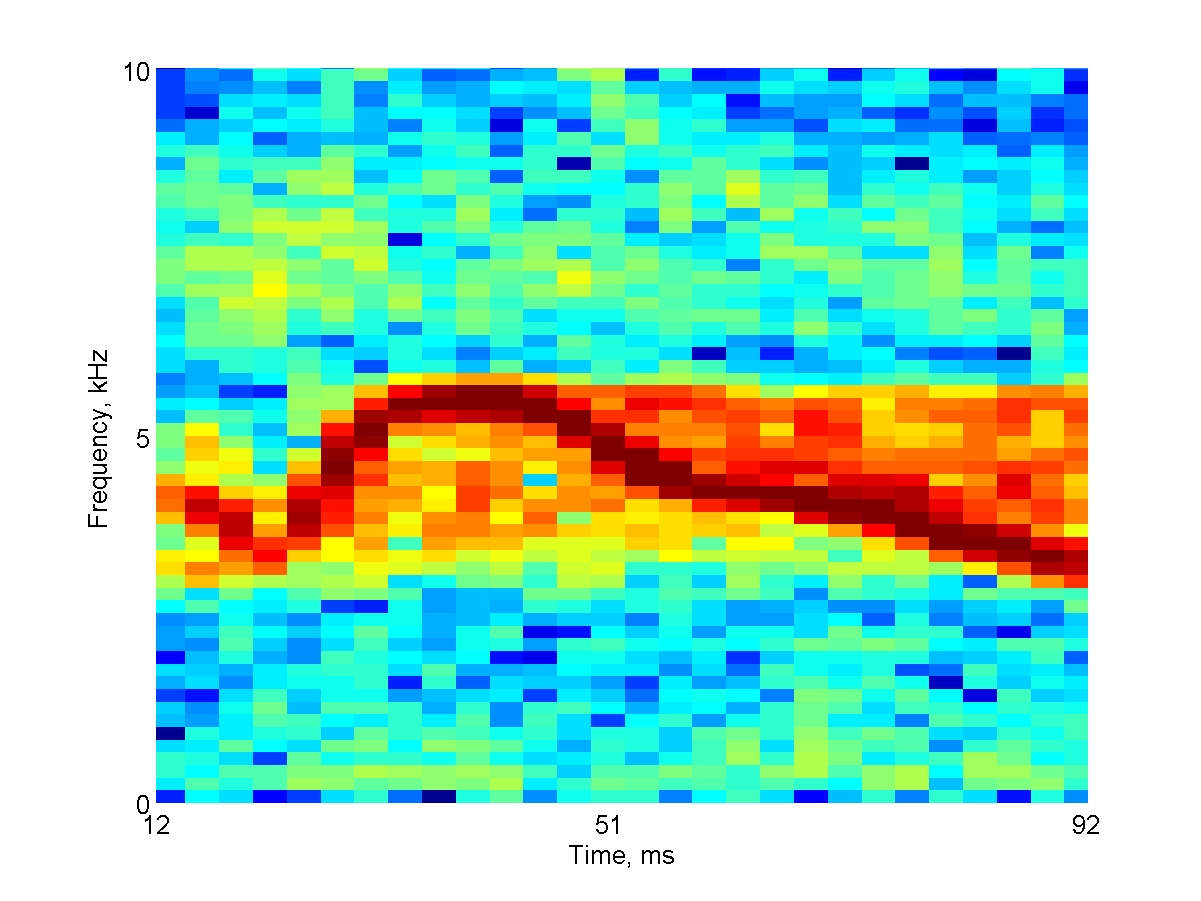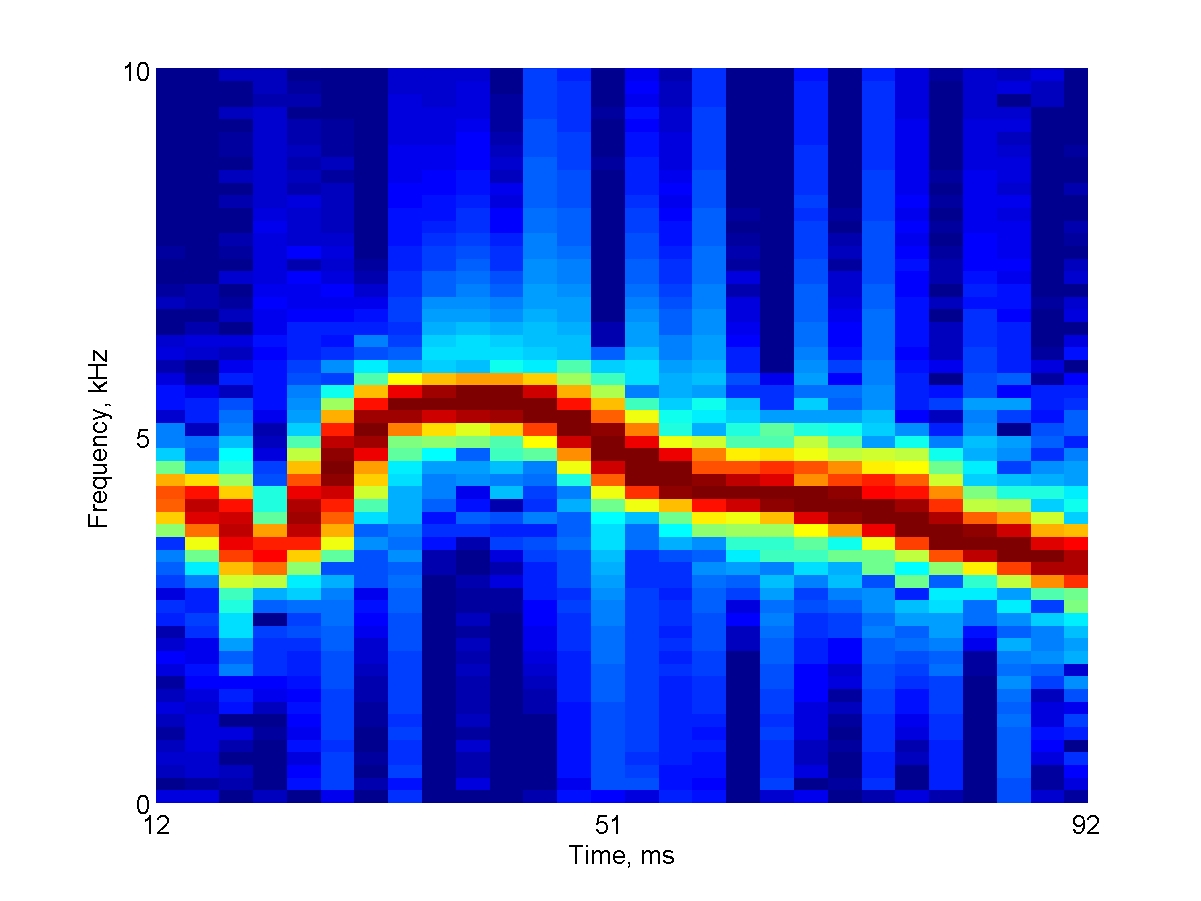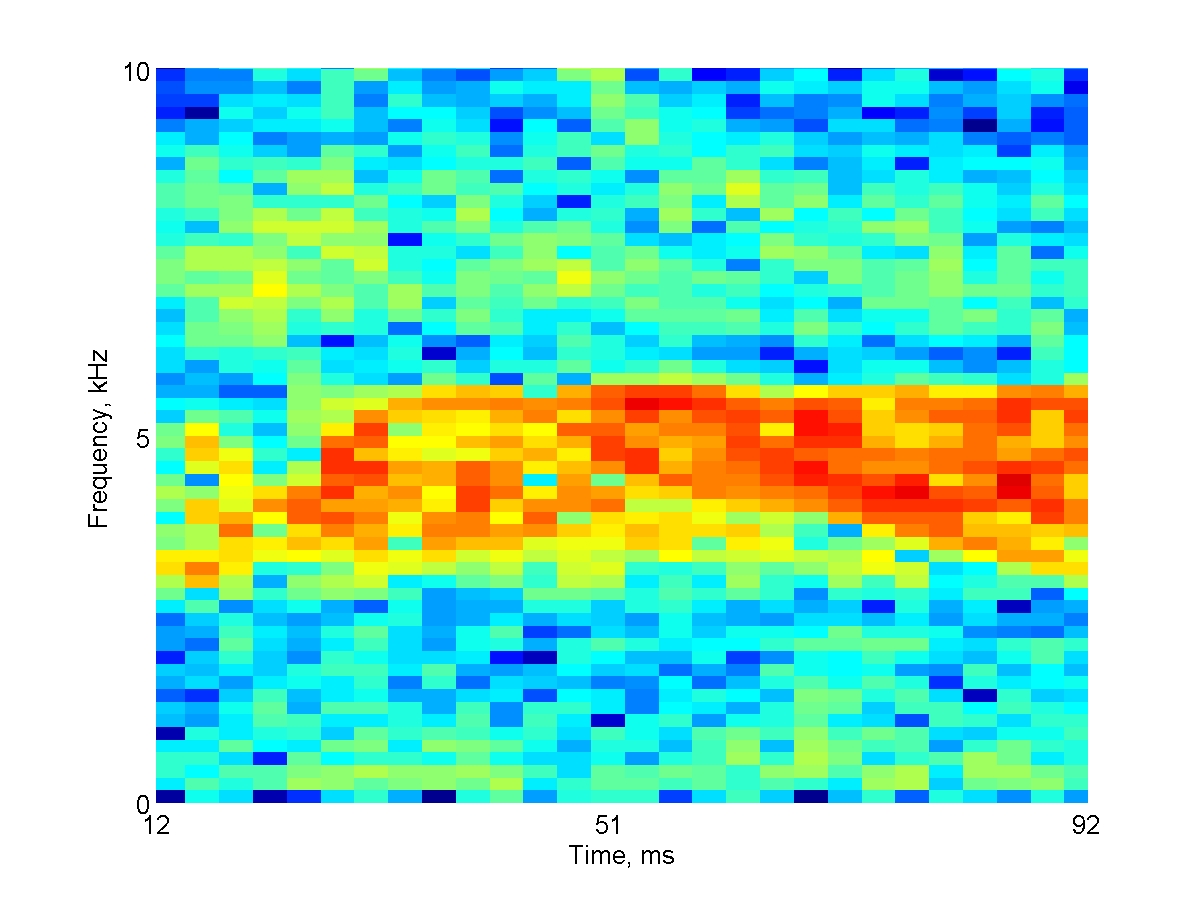Sounds recorded in nature are almost always mixtures of multiple components. Section 6.3.4 of the book reviews studies (by Bar-Yosef and Nelken) that tested the responses of neurons in cat auditory cortex to bird songs. These songs, which were recorded in nature, contained, in addition to the bird chirps, also echoes and background noise. The sounds have been decomposed into the clean chirps and the background noise. The main result of the experiments (Bar-Yosef et al. 2002, Bar-Yosef and Nelken 2007) was the demonstration that the backgrounds had a very strong effect on the neuronal responses, even in the presence of the much stronger clean chirp.
The following three spectrograms illustrate one of the sounds used in these experiments. You can listen to each sound both at its original sampling rate (44.1 kHz) and at a lower sampling rate (8 kHz). It is much easier to figure out the relationships between the sound and its spectrogram when playing it at the lower sampling rate. The experiments, however, were all conducted with the sounds played at their original sampling rate.
Here's the spectrogram of the full natural sound:

Original Speed:
Slow:
Here's the clean chirp ('Main'):

Original Speed:
Slow:
And here's the noise, which is the difference between the natural sound and the clean chirp. The difference was calculated in the time domain, sample by sample:

Original Speed:
Slow:
